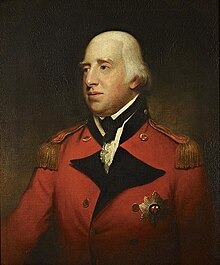| Cape Gloucester Queensland | |||||||||||||||
|---|---|---|---|---|---|---|---|---|---|---|---|---|---|---|---|
 Gloucester Passage, 2022 | |||||||||||||||
| Coordinates | 20°09′44″S 148°31′43″E / 20.1622°S 148.5286°E | ||||||||||||||
| Population | 85 (2021 census) | ||||||||||||||
| • Density | 0.3725/km (0.965/sq mi) | ||||||||||||||
| Postcode(s) | 4800 | ||||||||||||||
| Area | 228.2 km (88.1 sq mi) | ||||||||||||||
| Time zone | AEST (UTC+10:00) | ||||||||||||||
| Location |
| ||||||||||||||
| LGA(s) | Whitsunday Region | ||||||||||||||
| State electorate(s) | Whitsunday | ||||||||||||||
| Federal division(s) | Dawson | ||||||||||||||
| |||||||||||||||
Cape Gloucester is a coastal rural locality in the Whitsunday Region, Queensland, Australia. In the 2021 census, Cape Gloucester had a population of 85 people.
Geography
Two parts of the Dryander National Park are in the east and south of the locality. Apart from these protected areas, the predominant land use is grazing on native vegetation. There are houses dotted along the coastline and along Hydeaway Bay Road (mostly on rural residential blocks).
Coastal features
The locality has the following coastal features, clockwise:

- Edgecumbe Bay (20°06′49″S 148°23′25″E / 20.1137°S 148.3902°E)
- Sinclair Bay (also known as Sinclaire Bay) (20°06′49″S 148°27′16″E / 20.1136°S 148.4544°E).
- Cape Gloucester (20°03′38″S 148°27′12″E / 20.0606°S 148.4533°E)
- Gloucester Passage (20°03′26″S 148°27′42″E / 20.0573°S 148.4617°E)
- Shoal Bay (20°04′39″S 148°29′10″E / 20.0775°S 148.4862°E)
- George Point (20°04′04″S 148°33′45″E / 20.0678°S 148.5626°E)
- Double Bay (20°11′27″S 148°36′42″E / 20.1908°S 148.6116°E)
Mountains
The locality has the following mountains:
- Ben Lomond (Sugar Loaf) (20°09′24″S 148°26′54″E / 20.1568°S 148.4484°E) 429 metres (1,407 ft)
- Cork Hills (20°11′34″S 148°29′52″E / 20.1928°S 148.4978°E) 165 metres (541 ft)
History

The locality is named after the cape, which was in turn named after William Henry, Duke of Gloucester and Edinburgh, on 4 June 1770 by Lieutenant James Cook of HMS Endeavour.
Demographics
In the 2016 census, Cape Gloucester had a population of 62 people.
In the 2021 census, Cape Gloucester had a population of 85 people.
Education
There are no schools in Cape Gloucester. The nearest government primary school is Proserpine State School in Proserpine to the south. The nearest government secondary school is Proserpine State High School, also in Proserpine.
References
- ^ Australian Bureau of Statistics (28 June 2022). "Cape Gloucester (SAL)". 2021 Census QuickStats. Retrieved 28 February 2023.
- ^ "Cape Gloucester – locality in Whitsunday Region (entry 46858)". Queensland Place Names. Queensland Government. Retrieved 30 May 2019.
- ^ "Queensland Globe". State of Queensland. Retrieved 28 August 2023.
- ^ "Mountain peaks and capes - Queensland". Queensland Open Data. Queensland Government. 12 November 2020. Archived from the original on 25 November 2020. Retrieved 25 November 2020.
- ^ "Bays - Queensland". Queensland Open Data. Queensland Government. 12 November 2020. Archived from the original on 25 November 2020. Retrieved 25 November 2020.
- ^ "Cape Gloucester – mountain in Whitsunday Region (entry 14072)". Queensland Place Names. Queensland Government. Retrieved 25 November 2020.
- ^ "Mountain ranges beaches and sea passages - Queensland". Queensland Open Data. Queensland Government. 12 November 2020. Archived from the original on 25 November 2020. Retrieved 25 November 2020.
- ^ "George Point – landmark in Whitsunday Region (entry 13595)". Queensland Place Names. Queensland Government. Retrieved 25 November 2020.
- ^ "Ben Lomond – mountain in Whitsunday Region (entry 2261)". Queensland Place Names. Queensland Government. Retrieved 25 November 2020.
- ^ "Cork Hills – mountain in Whitsunday Region (entry 42455)". Queensland Place Names. Queensland Government. Retrieved 25 November 2020.
- ^ "Cape Gloucester – cape in Whitsunday Region (entry 14072)". Queensland Place Names. Queensland Government. Retrieved 2 June 2019.
- ^ Australian Bureau of Statistics (27 June 2017). "Cape Gloucester (SSC)". 2016 Census QuickStats. Retrieved 20 October 2018.
